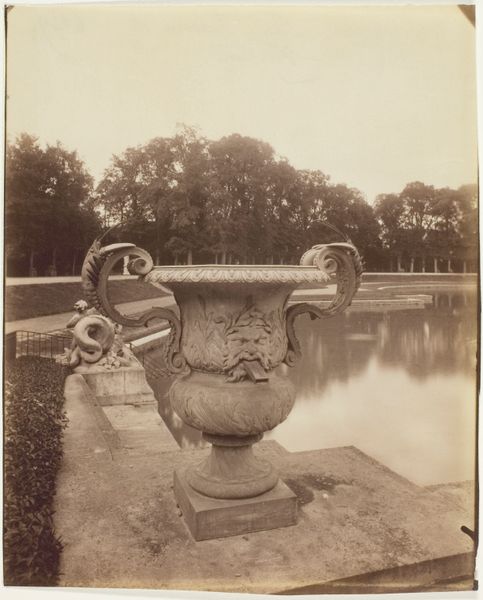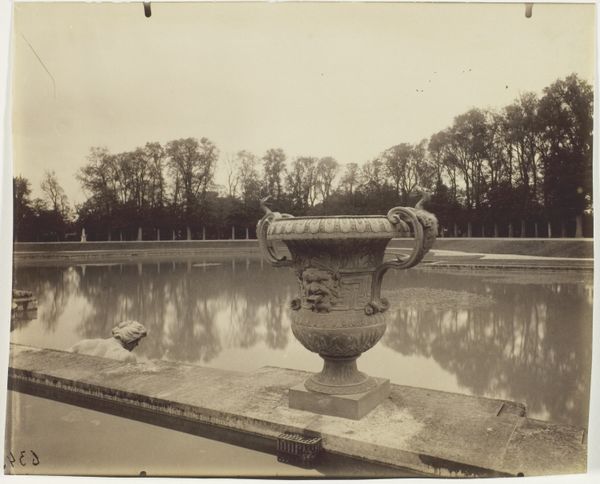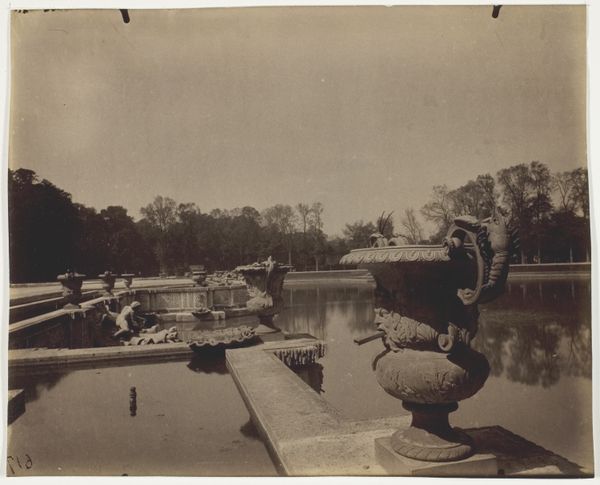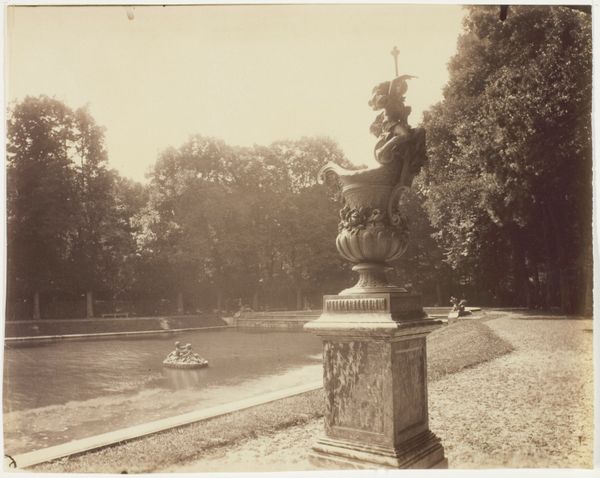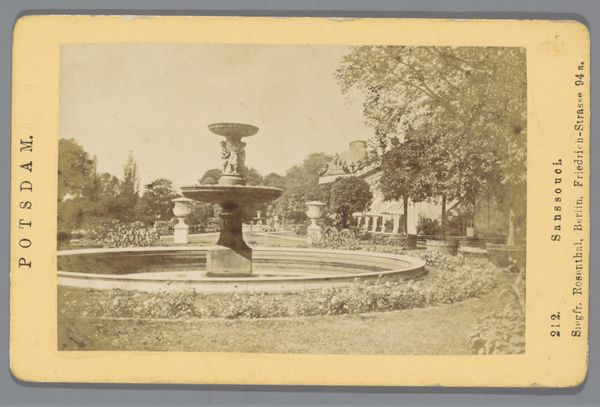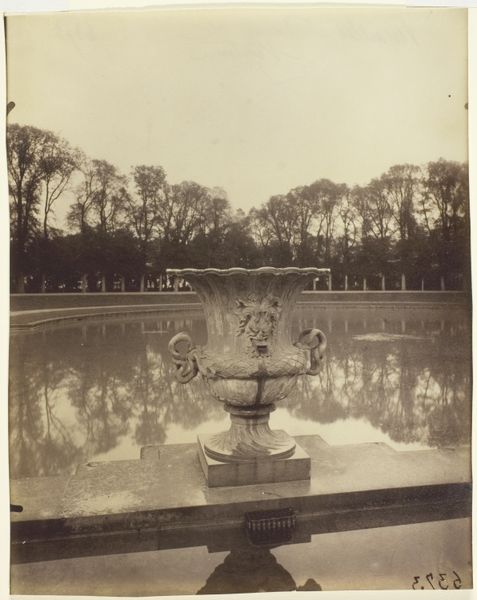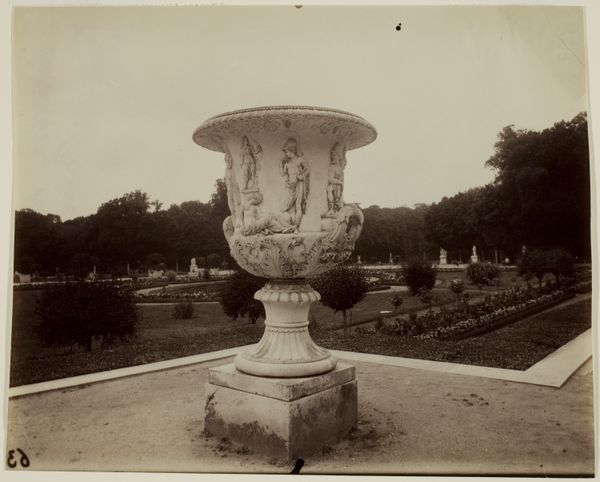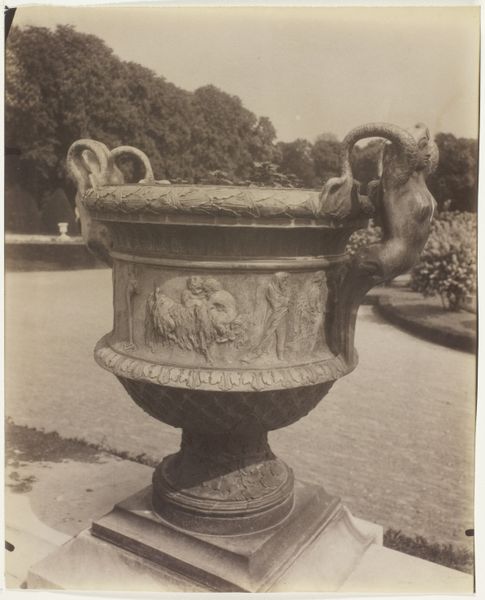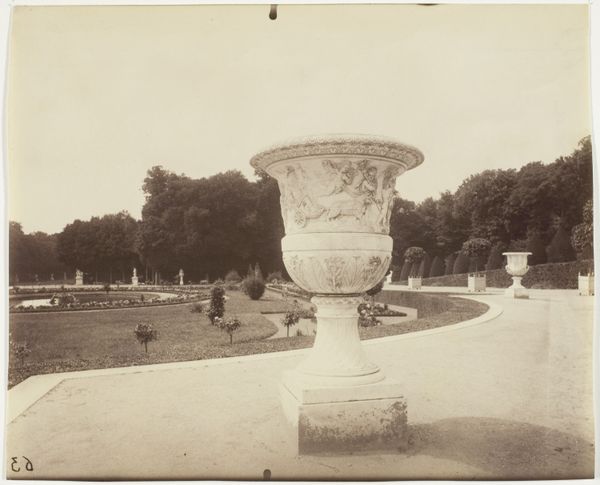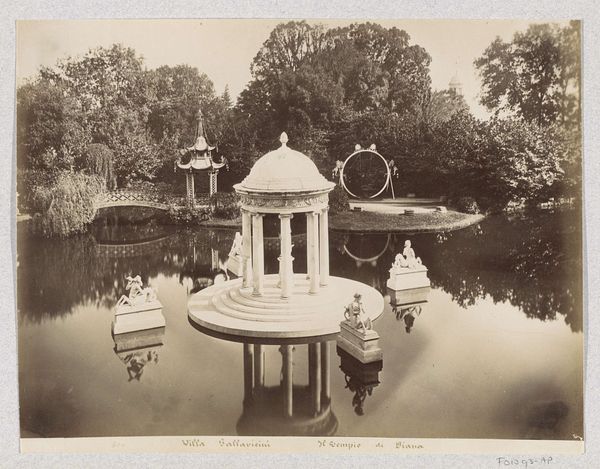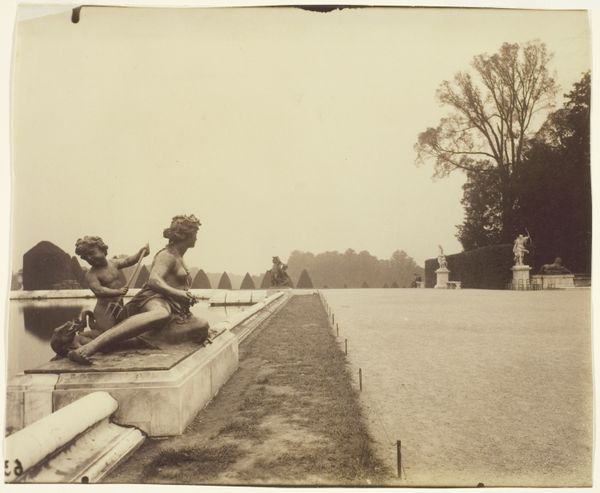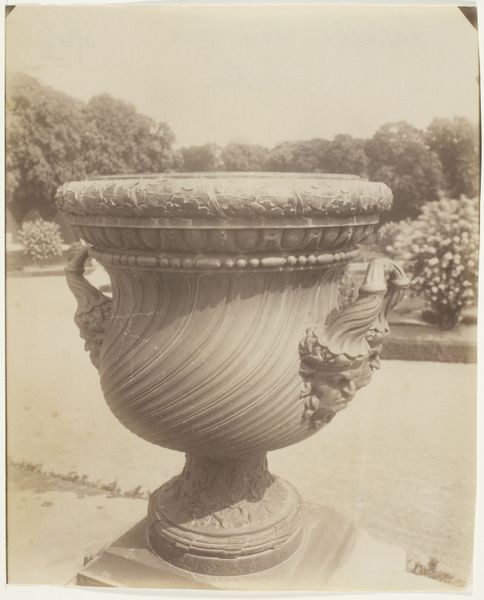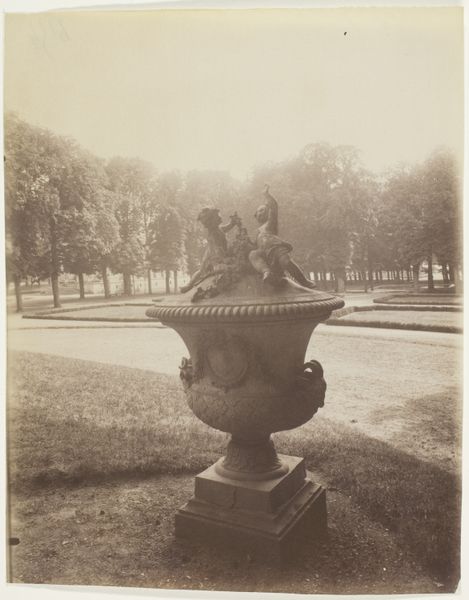
Dimensions: 17.5 × 22.4 cm (image/paper)
Copyright: Public Domain
Curator: Oh, isn’t that something? There's a kind of melancholic grandeur to this view, like a faded dream. It feels steeped in stillness. Editor: This is Eugène Atget's "Versailles, Basin de Neptune," a photograph taken around 1902. Atget dedicated himself to documenting the architecture and gardens of Paris and its environs, capturing a vanishing world at the turn of the century. Curator: Vanishing…yes, exactly! It has that palpable sense of history slipping away. I’m drawn to how the elaborate urn in the foreground is almost… overgrown. You can imagine nymphs dancing there once. What about you? Editor: For me, it highlights the spectacle of power and its intended audience. Versailles was, after all, Louis XIV’s stage for projecting absolute authority. Atget, though, finds the human element somewhat missing. These are the props, meticulously crafted and arranged, yet subtly overtaken by nature. Curator: True. There's something undeniably tragic about these grandiose settings emptied of the court’s bustle. The reflecting pool amplifies that quietude. And what strikes me as odd is, it doesn’t romanticize Versailles— it feels matter-of-fact in its melancholic, documentary tone. Editor: That's key. Atget wasn't interested in idealized representations, but rather, in a meticulous, almost archaeological record. Photography allowed him a unique position. The prints could also be purchased by other artists, an essential act to consider: it was not necessarily meant as a piece of fine art to hang on someone’s wall, or to express subjective emotions. Curator: So, in a sense, a tool to be reinterpreted, a stepping stone? It invites us to write our own story into that scene... or perhaps find ourselves reflecting in that pond. A beautiful image and reflection of what public role it takes by making us re-explore history, what are your thoughts on it? Editor: Ultimately, Atget's lens renders Versailles not as a static monument but as a site of constant negotiation between grandeur and decay, power and emptiness. A complex portrait that continues to resonate today.
Comments
No comments
Be the first to comment and join the conversation on the ultimate creative platform.
